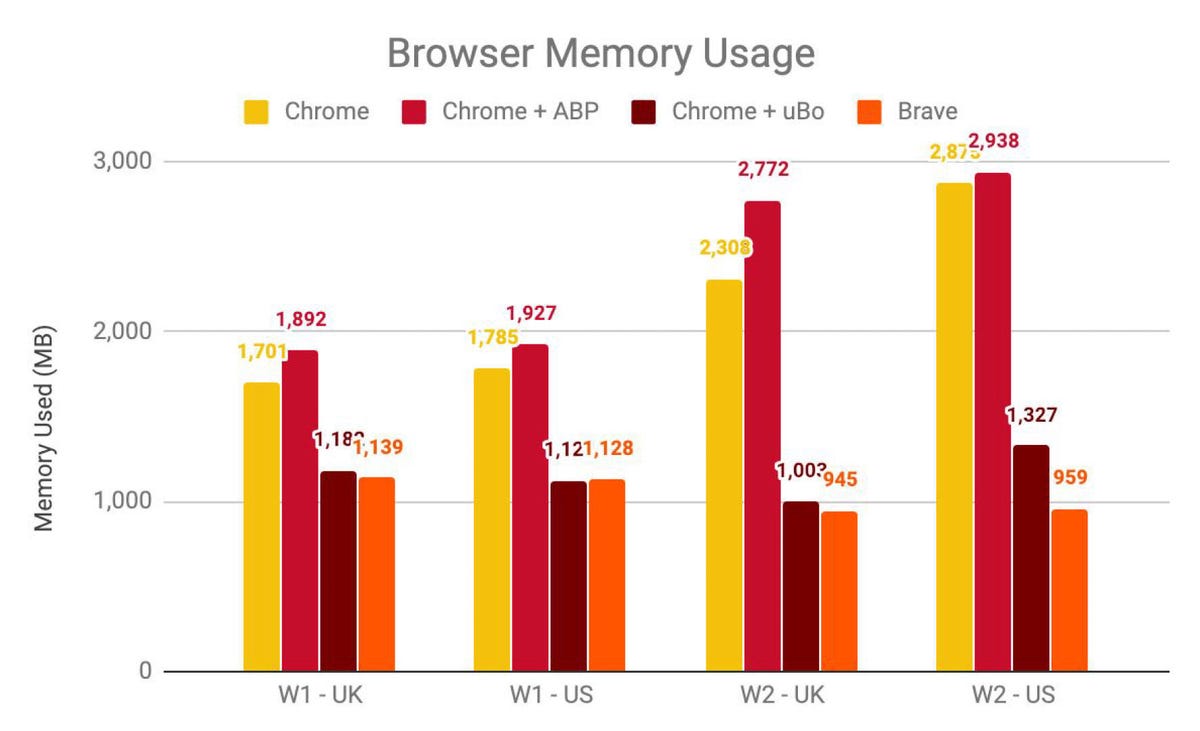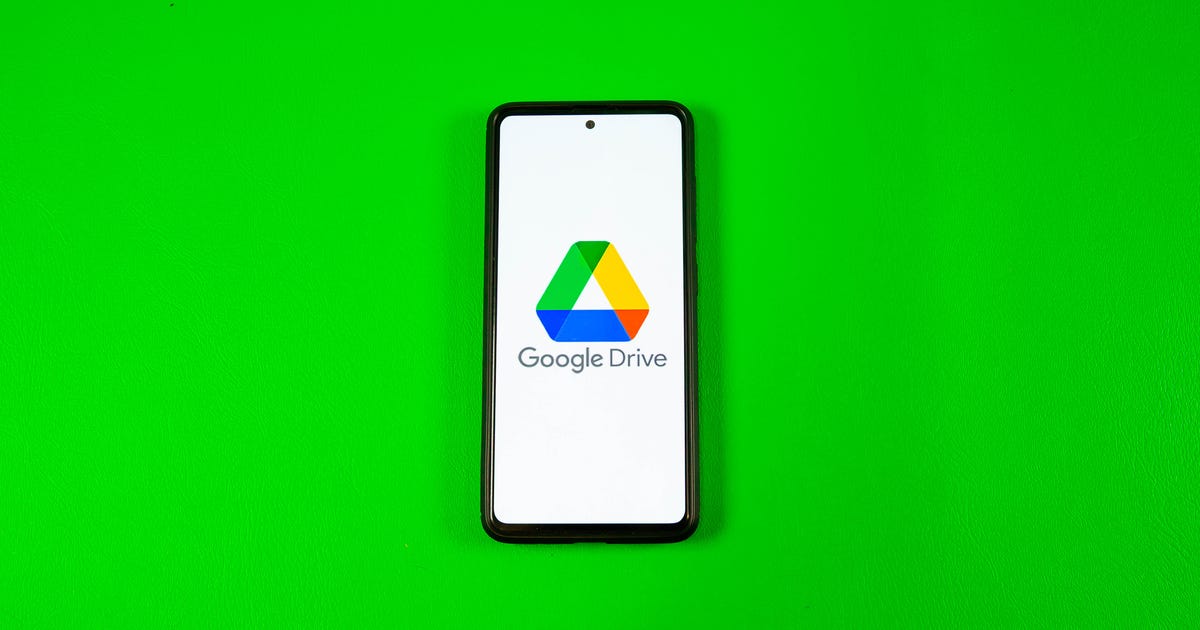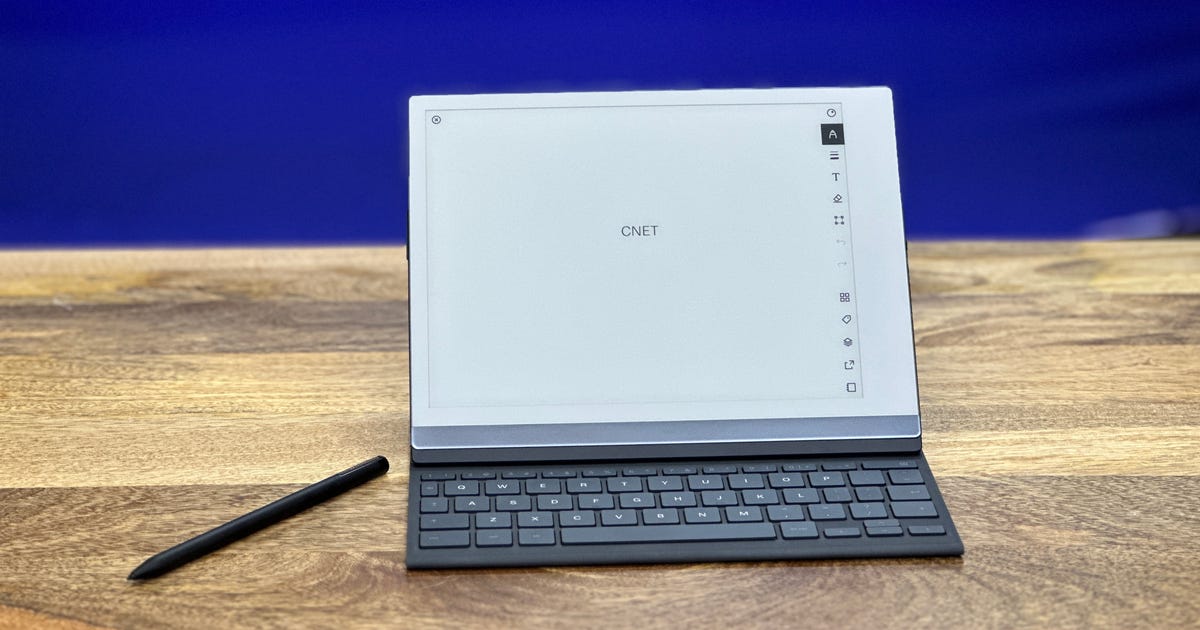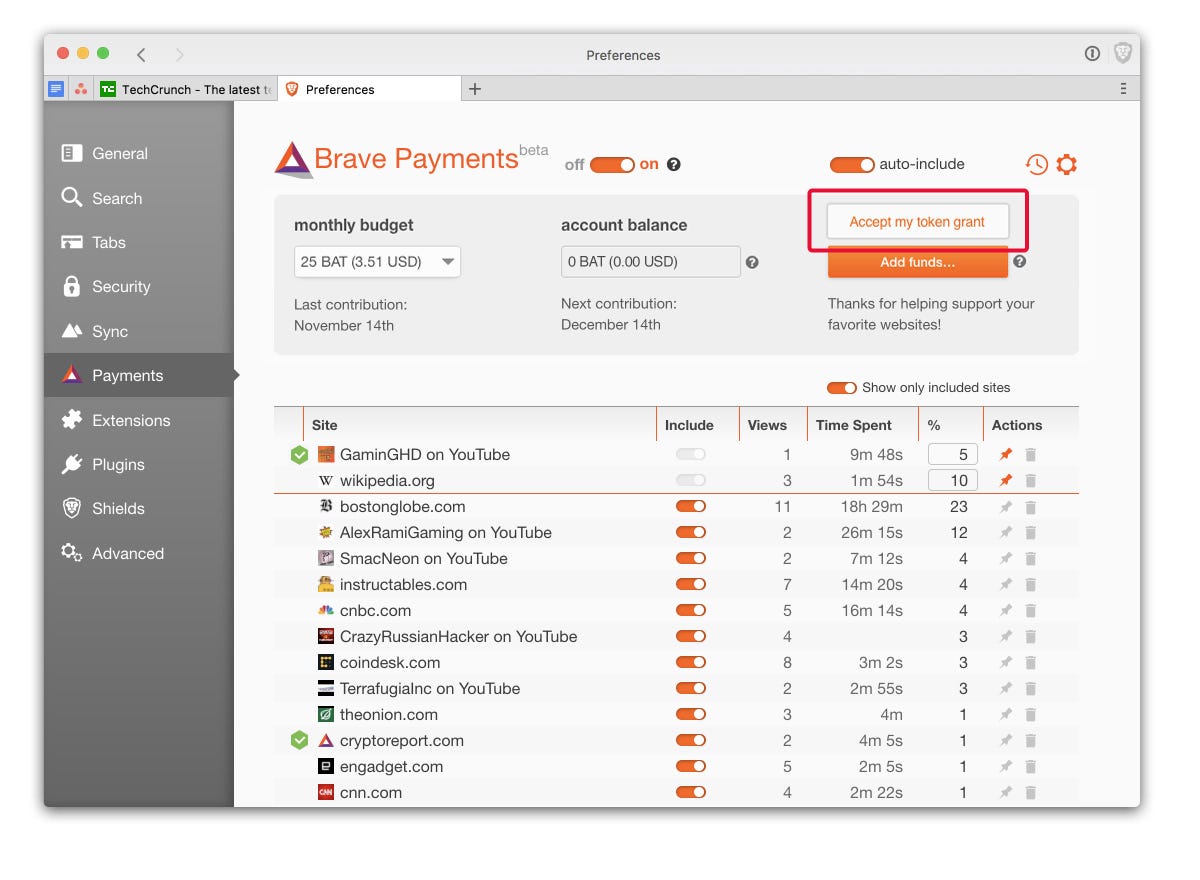You might run an ad blocker in your browser to cut website clutter and keep companies from tracking you online. But the ad-blocking Brave browser has another reason to intervene: to free up memory and preserve your battery life.
Detailed tests comparing Brave to Google’s dominant Chrome browser, with and without the Adblock Plus and uBlock Origin ad-blocking extensions, show that blocking ads can help reduce browsers’ ever-heavier use of precious computer memory on ad-heavy sites. Brave cuts memory use by 33 percent to 66 percent compared with ordinary Chrome, the company said Friday.
Memory is a precious resource on laptops and phones, critical to everything a device does. As browsers have increased in power, becoming full-fledged software foundations instead of just vessels for digital documents, memory usage has soared. But browsers are getting more assertive about displaying websites in ways that are good for those of us looking at them, not necessarily those publishing them.
Reader mode, tracking protection and ad blocking are some examples of browsers taking more control. Ad blocking helps not just with memory use, but also with power consumption, Brave has found.
“The primary savings come from blocking resource-hungry ads and trackers that popular sites are teeming with, especially news ones,” Brave Chief Scientist Ben Livshits told CNET in an exclusive interview. “In our research, we show that Brave consumes 40 percent less battery than popular browsers like Chrome, Edge and Firefox thanks to a combination of bandwidth savings and lower CPU pressure.”
Brave Software, founded by JavaScript inventor and former Mozilla Chief Executive Brendan Eich, got its start with an ad-blocking browser. But it isn’t opposed to ads. In fact, its business strategy relies on showing its own ads with its own technology designed to protect privacy and share some of the ad revenue with anyone using its browser. In its first phase, now in testing on personal computers, ads are shown in notifications that have no tracking scripts, animation, audio or video.


Brave testing showed its browser using less memory usage than Google Chrome, with or without the AdBlock Plus and uBlock Origin ad blockers. The four comparisons show results for a higher-end MacBook (W1) and less powerful MacBook Air (W2) making network requests from the US and UK. The test was on ad-heavy news sites where ad blocking saves memory and cuts power use.
Brave Software
Reducing memory use is a priority in the browser world. Google Chrome — whose open-source Chromium project is the foundation for Brave, Opera, Vivaldi and soon Microsoft Edge — is working on memory reductions. And Firefox has a whole project called MemShrink, a good thing since security improvements mean it won’t be as economical.
Memory is precious
New trends make memory even more precious. Websites are piling on ever more JavaScript code, and smartphones don’t typically have as much memory as laptops even though web developers want to build more advanced websites.
If you want to stick with Chrome, you can get most of Brave’s advantages with the uBlock Origin extension, Brave’s test showed. The AdBlock Plus extension actually increased memory use. The company measured memory usage with a number of websites, mostly news sites, on a powerful MacBook Pro, but it said its results were validated with an older, feebler MacBook Air.
Adblock Plus by default shows ads that comply with its “acceptable ads” policy. Disabling that reduces memory usage to about the level of Chrome and uBlock Origin, Livshits said. Adblock Plus developer Eeyo didn’t immediately respond to a request for comment. Google, Apple and Microsoft didn’t comment.
“We’re very conscious of Firefox’s memory footprint, but efforts to decrease RAM must be balanced against features that make the browser faster, more responsive, and more secure,” Mozilla said in a statement. The upcoming Firefox 66, for example, will improve performance without requiring more memory. “We’ll continue to improve the resource efficiency of Firefox so it continues to run great for every user on whatever device they’re using,” Mozilla said.
Advantage evaporates on sites without ads
Brave’s memory advantages won’t carry over to websites that aren’t so heavily loaded with ads as those in the company’s test.
“Pages that are clean, such as Gmail or Wikipedia, would currently use the same amount of memory as on Chrome,” Livshits said. And your mileage may vary: “Power users tend to see high memory use regardless of browser or ad blocker,” because browsers cache more information for quick access, he added.
You could see websites get even easier on your hardware, too.
Brave is working on a new SpeedReader mode — a more aggressive alternative to browser reader modes that show reduced-clutter views of websites. SpeedReader is designed to block ads and trackers long before they burden the computer, increasing website display speeds by a factor of 20. That’ll bring benefits for memory and power usage, too.
“By focusing on allowing the least content possible for great content reading experience, it does not load any scripts (advertising or not) and even removes unimportant graphics,” Livshits said. “We haven’t run the exact same test to measure memory use in this scenario, but expect it to use a fraction of the memory of standard mode.”












